
Guide
Keen on chilli? Sow quickly now!
by Darina Schweizer

Fresh soil for houseplants allows fresh fungus gnats into your house. No more! The game is up thanks to your oven and microwave.
Finally, they’re all gone and my «houseplants» are protected. I just completed a large-scale campaign of eradication on some fungus gnats. Some died in the oven. Others were killed in the microwave. Their offspring has equally evaporated. In addition, my earth is also free from other intact fungi, viruses and vermin.
But what happened, what is this all about? In short: I bought Ricoter citrus potting soil at the garden centre. The soil I’ve been buying regularly for over a decade. It’s exactly the pH I need, about 6.5. Only, since last year it’s excessively infested with fungus gnats and their larvae, which can cause problems.
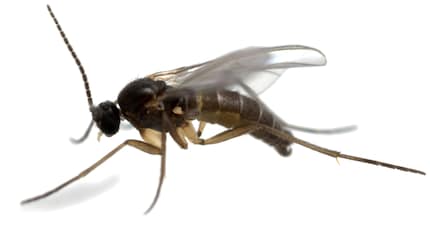
Fungus gnats (Sciaridae) can grow up to seven millimetres long, depending on the species. Unlike mosquitoes, they don’t feed on blood. Those only ingest liquid. Gnat larvae feed mostly on foliage, bark, dead wood or fungi. However, larvae of certain species can also eat plant roots – where my sympathy towards these prancing micro eagles ends. My beloved greens are being threatened.
Due to an increased frequency of earthquakes, I had to expand my previous anti-mosquito method. So far, I’ve fought the beasts with a protective barrier made of bird sand. Which actually works well as long as it’s one to two dozen insects. With many dozens of mosquitoes, however, some will always reproduce and fly out despite a layer of sand on the soil – and a second in the lower part of the pot. Not cool. Especially not since I grow cannabis, a plant many mosquitoes get stuck in. Requiring me to laboriously pluck them out one by one with tweezers.
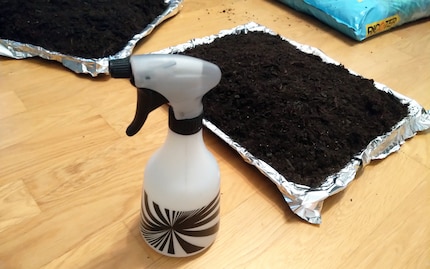
Up to now, I refrained from baking and «microwaving» as sterilising soil also has its disadvantages – more on that in a moment. However, these didn’t show up during subsequent earth sample tests. I grew five female cannabis plants from seeds over several months – I used Ricoter citrus plant soil as always and got a good, insect-free flower yield with microwaved and baked soil. Not a single fungus gnat showed up in my little tent over that time.
Soil can be steamed to eliminate fungi, viruses, bacteria, insects, nematodes and wild weed seeds. But to make even the most stubborn viruses disappear, your substrate must be exposed to a temperature of at least 100 degrees Celsius. Most pests, fungi and seeds die already at 70 degrees Celsius.
Steaming earth has advantages and disadvantages. Sterilised soil is especially recommended for growing vegetables and herbs. However, useful microorganisms will also be removed – they die right alongside when steaming. Nutrients themselves should remain contained as long as the substrate isn’t steamed in the wrong way – too long, too dry or too hot.
For five plants I needed a total of 60 litres of soil. With around 15 litres of it baked in the oven. This corresponds to two baking trays full of substrate. I used my oven’s hot air function. This distributes heat well throughout the oven, allowing me to bake two full trays at the same time. Without convection or hot air – i.e. top/bottom heat – I’d only be able to put in one tray. Is this the right move? Well, I still don’t own a steriliser – besides, I usually bake yeast gugelhupf, garlic bread or fries. Either way, it worked, and that’s good enough for me.
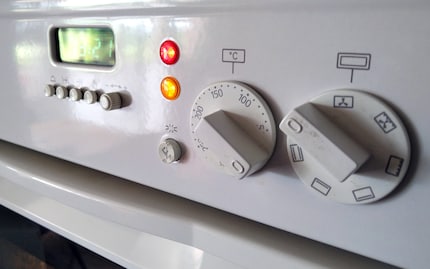
How to bake earth:
While baking, your entire apartment will smell as if you were dishing up jacket potatoes for a football team. Baked soil smells like potatoes, apparently.
I sterilised the remaining 45 litres of soil in my microwave. Mainly because I was lazy and this method requires fewer steps. But you won’t really be any faster. Although the soil only needs to be microwaved for ten minutes, you get a lot less in. And, by the way, cooling takes a while with both methods, and both also carry the equally intense smell of potatoes.
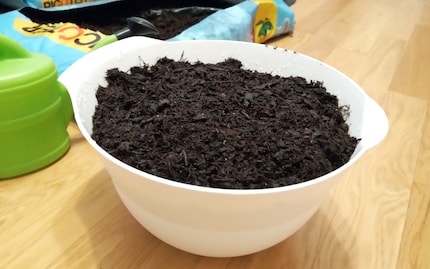
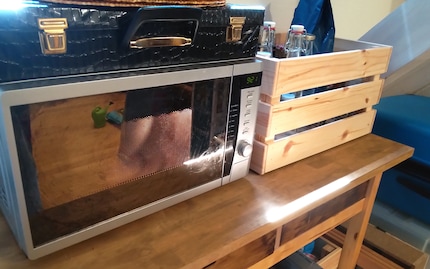
How sterilisation with electromagnetic waves works:
I steamed my 60 litres of soil spread over a good two afternoons in one weekend. Naturally, I took it easy and also steamed in between. Still, it’s a lot of work – I say wheezing – but totally worth it. I think that in the future I’ll also sterilise all new soil for my normal houseplants.
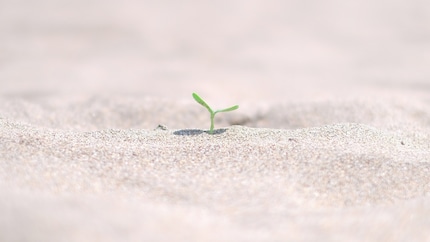
I still didn’t skip my bird sand trick mentioned earlier, despite the steaming. Make sure to always put a layer one to two inches thick on your soil, just to be on the safe side. Like this, the invasion can restart at any time from an external source.
Stay vigilant, friends of nature – for she is relentless.
I find my muse in everything. When I don’t, I draw inspiration from daydreaming. After all, if you dream, you don’t sleep through life.
Practical solutions for everyday problems with technology, household hacks and much more.
Show all